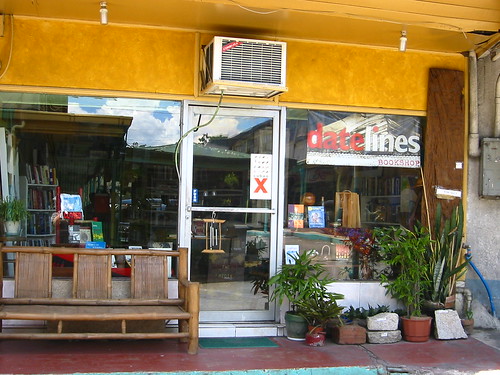Filipino bookworms ranked no 3
Everyday I read a couple of articles from the websites of Philippine newspapers and media outfits. To get the facts out in this country you really have to read two or accounts of the event from the different media entities. Today as I was perusing the Philippine Inquirer I came across an article a few rows below the PGMA-related articles. Alcuin Papa reported that a survey conducted by the global market research organization NOP World .
The following link will take you to INQ7.net :
Filipinos No. 3 among world's bookworms
http://news.inq7.net/nation/index.php?index=1&story_id=41791
The NOP World Culture Score index was a survey of taken from December 2004 to February 2005 and the study involved 30,000 consumers above the age of 13 from 30 countries.
On a weekly basis, Filipinos spend an average of 7.6 hours reading books, newspapers and magazine. Beating the Americans, who came in 23rd with 5.7 hours, and the British ,who spent 5.3 hours and were ranked 26th. The Japanese spent 4.1 hours and the Koreans who spent 3.1 hours. Indian bookworms came out on top with 10.7 hours while the Chinese came in second with eight hours.
NOP analysts explained that self-help and inspirational reading may explain India's high figures.
In the same survey, Filipinos came in second as the top tv watchers in the world. According to the survey, Filipinos on weekly basis spend on the average 21 hours watching the telly. Our neighbors the Thais spend at least 22.4 hours a week in front of the boob tube.
And the Taiwanese spend the most time after work surfing the Internet. They spend at least 12.6 hours each day in front of the computer. We on the other hand, again according to the survey spend on the average 9.8 hours, the article was not clear whether this figure is a daily or weekly average.
So Filipinos also came in as top TV watchers. This is sort of paradoxical since it was suggested that time spent on reading meant fewer hours in front of the TV set and listening to the radio. So how do you reconcile this? Interesting findings.
It would also have been interesting to find out what was the predominant reading material or reading material of choice: books, newspapers, magazines or others.
In our old class in Philippine publishing it was revealed that missalette was the most read and published periodical. This was of course a few years ago. Things might have change by now.
The following link will take you to INQ7.net :
Filipinos No. 3 among world's bookworms
http://news.inq7.net/nation/index.php?index=1&story_id=41791
The NOP World Culture Score index was a survey of taken from December 2004 to February 2005 and the study involved 30,000 consumers above the age of 13 from 30 countries.
On a weekly basis, Filipinos spend an average of 7.6 hours reading books, newspapers and magazine. Beating the Americans, who came in 23rd with 5.7 hours, and the British ,who spent 5.3 hours and were ranked 26th. The Japanese spent 4.1 hours and the Koreans who spent 3.1 hours. Indian bookworms came out on top with 10.7 hours while the Chinese came in second with eight hours.
NOP analysts explained that self-help and inspirational reading may explain India's high figures.
In the same survey, Filipinos came in second as the top tv watchers in the world. According to the survey, Filipinos on weekly basis spend on the average 21 hours watching the telly. Our neighbors the Thais spend at least 22.4 hours a week in front of the boob tube.
And the Taiwanese spend the most time after work surfing the Internet. They spend at least 12.6 hours each day in front of the computer. We on the other hand, again according to the survey spend on the average 9.8 hours, the article was not clear whether this figure is a daily or weekly average.
So Filipinos also came in as top TV watchers. This is sort of paradoxical since it was suggested that time spent on reading meant fewer hours in front of the TV set and listening to the radio. So how do you reconcile this? Interesting findings.
It would also have been interesting to find out what was the predominant reading material or reading material of choice: books, newspapers, magazines or others.
In our old class in Philippine publishing it was revealed that missalette was the most read and published periodical. This was of course a few years ago. Things might have change by now.





